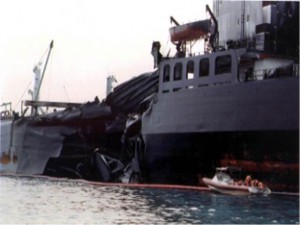Collisions and pollution
Marine pollution has often resulted from collisions between ships. From a legal viewpoint the fact that two ships are involved can complicate matters for two main reasons.
One is that both ships are commonly found to blame for the collision, in which case both may be liable for any resulting pollution. Complex issues can arise when claims are made against both. These have included questions relating to –
- the different bases of liability in each case
- whether the liability of the colliding ship is joint and several with that of the spilling vessel, or limited to its own proportion of blame
- limitation of liability.
In practice claims for pollution are commonly brought primarily against the spilling ship, which is then left to recover any contribution it can from the other vessel. Complications may then arise in the context of a collision action between the two ships, involving claims and counterclaims for various heads of loss or damage. When pollution damage is included among them, outcomes may depend on such matters as –
- whether the claims are made in subrogation to the rights of the original victims, or instead by way of indemnity for compensation paid
- whether the IOPC Fund has any rights of recourse
- whether the different types of claim for pollution are subject to limitation of liability.
These and other related topics are examined in Chapter 17 of Shipping and the Environment, which deals with the liability for pollution of the owners of colliding ships.

